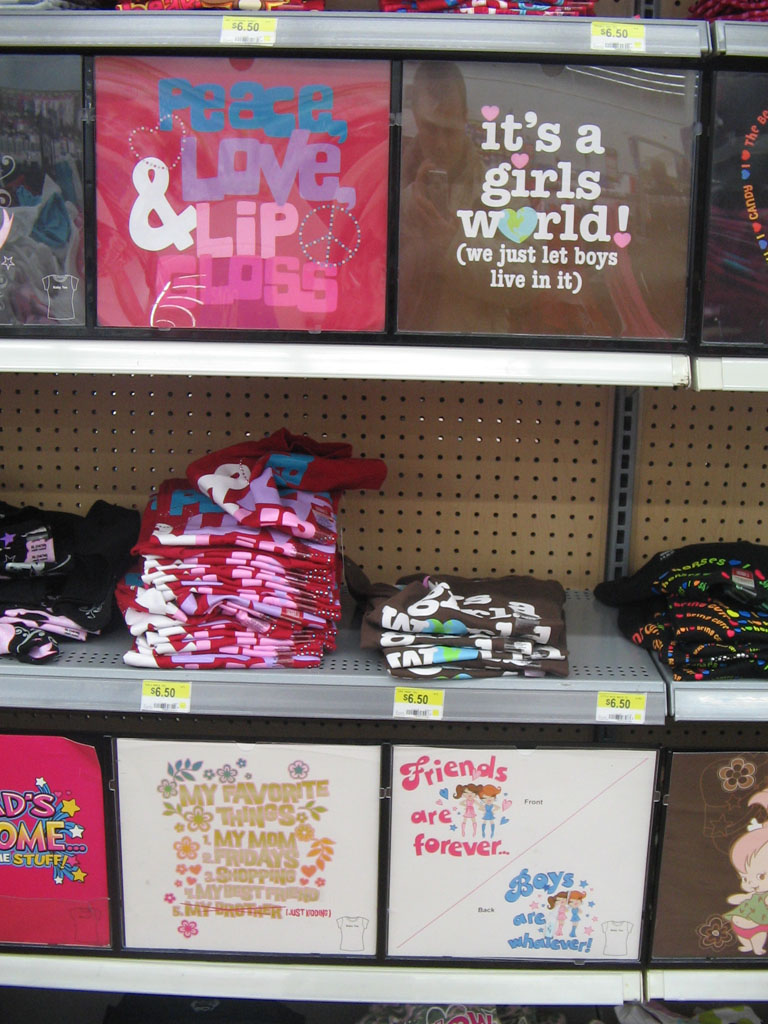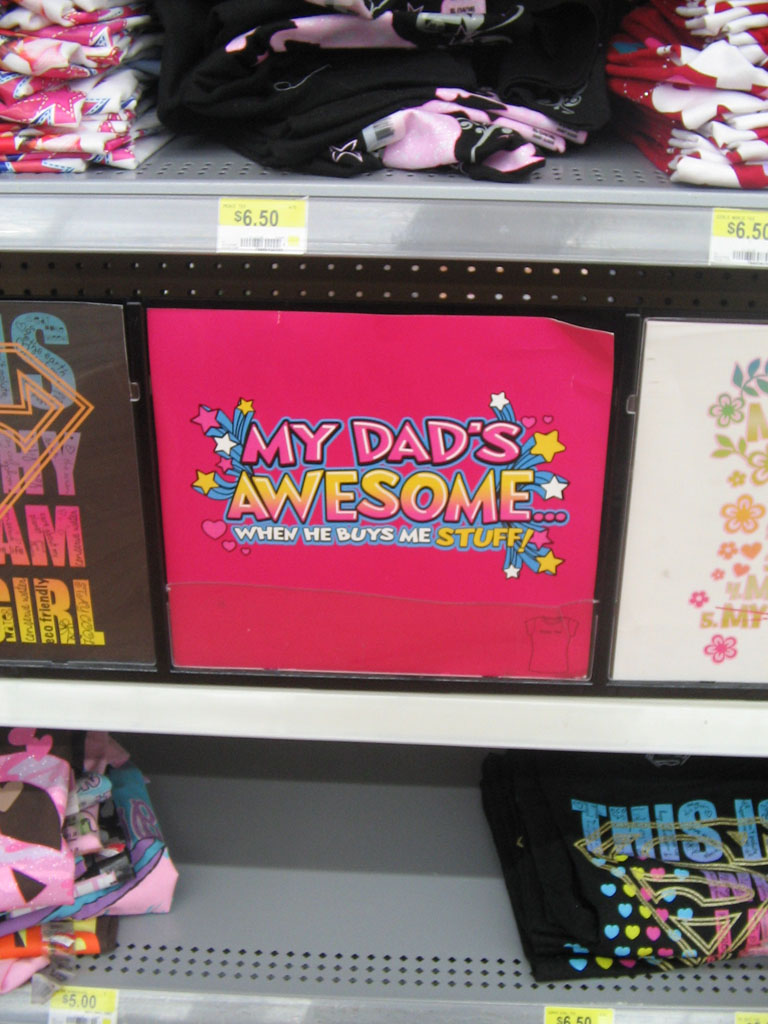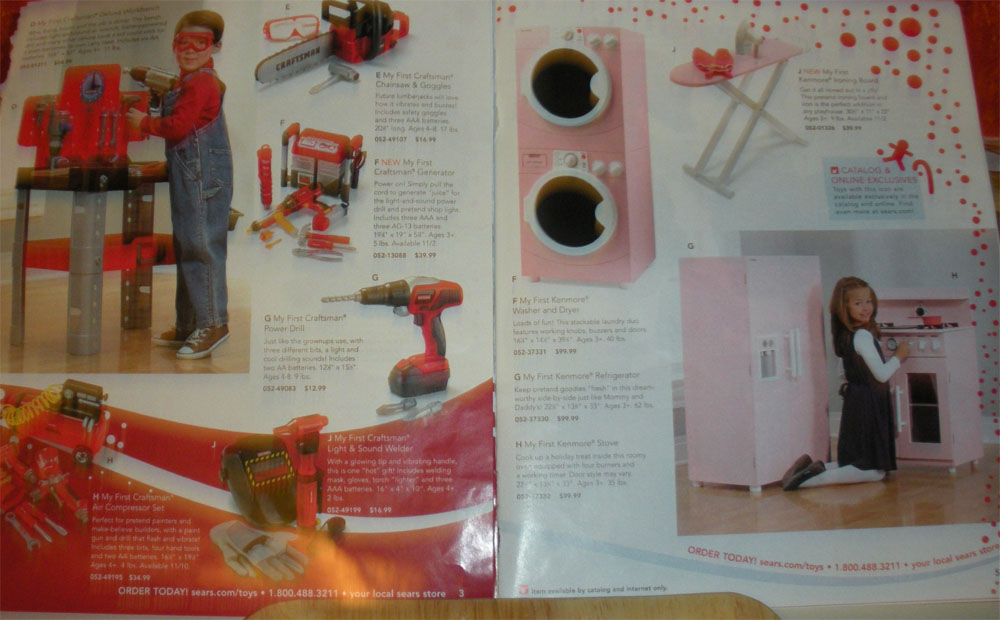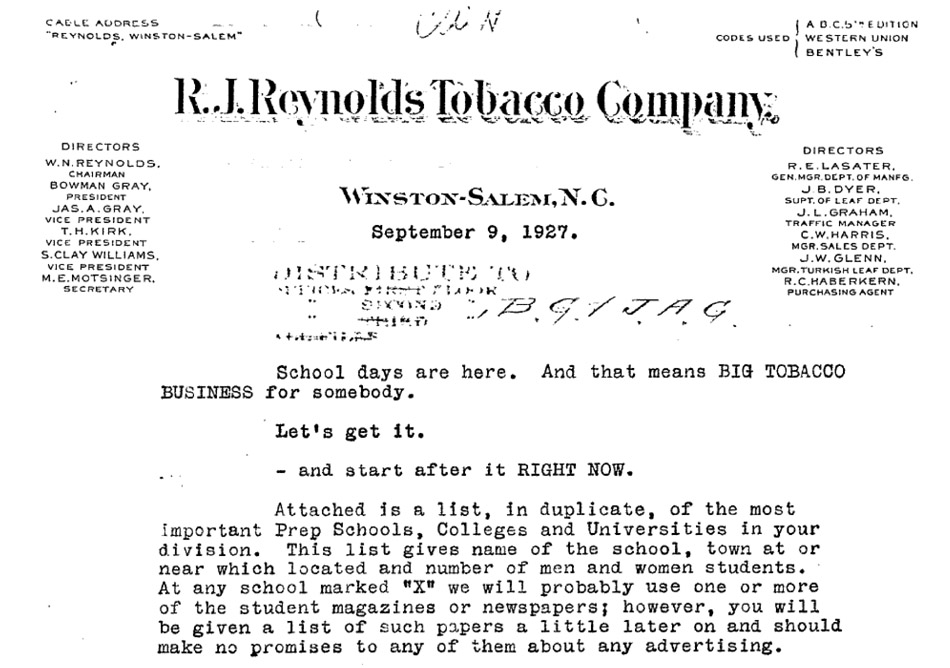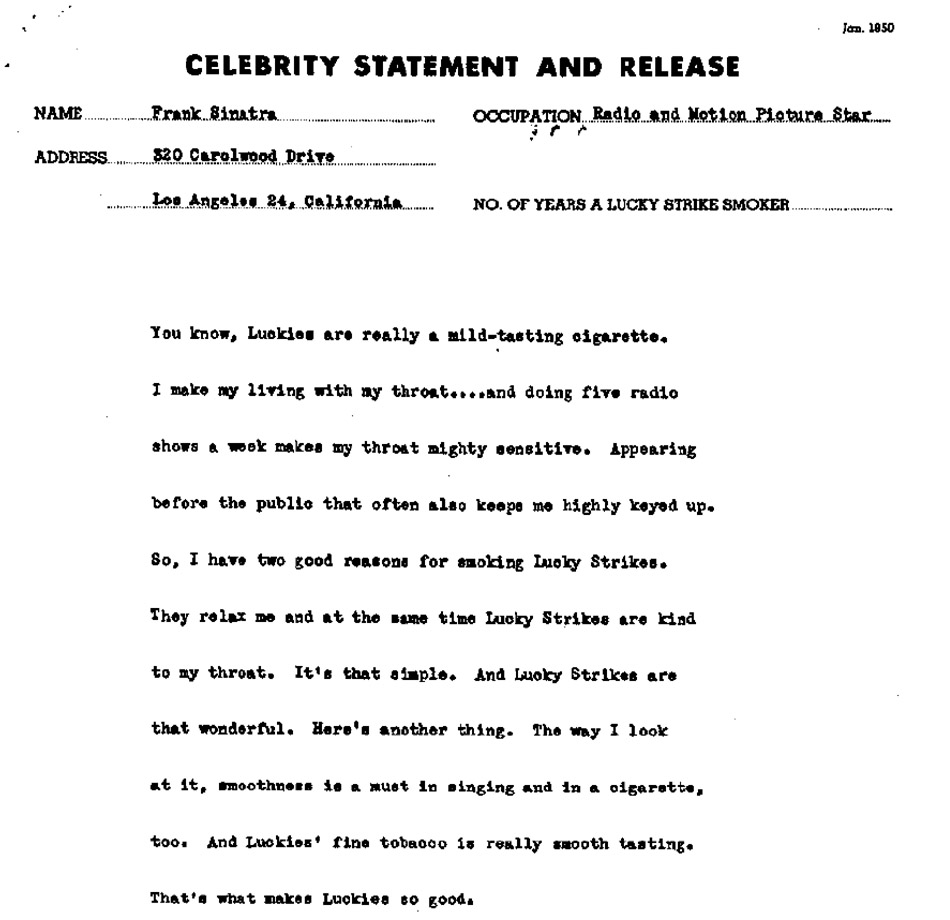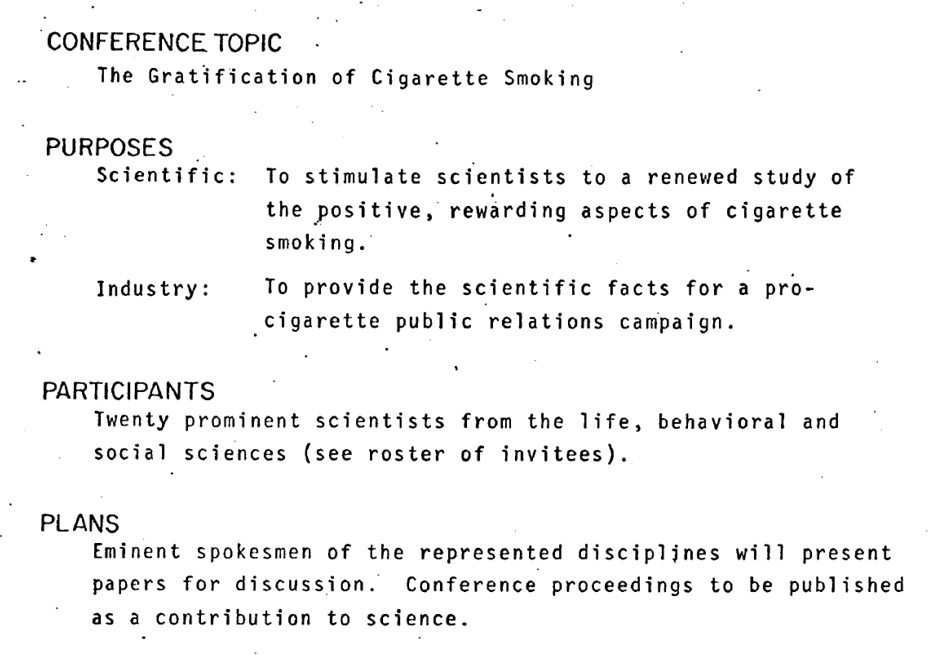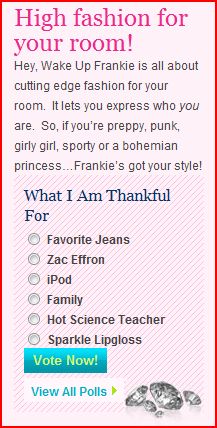We were shopping for my 6-year-old stepdaughter in Walmart in the Boston metro area this weekend. I took a picture of a display of T-shirts for sale for girls, available in size 6X-14. Clockwise, these 4 say “Peace, love and lipgloss,” “it’s a girls [sic] world! (we just let the boys live in it),” “”Friends are forever / Boys are whatever,” and “My favorite things: 1. My mom, 2. Fridays, 3. Shopping, 4. My best friends, 5. My brother (Just kidding).”
Here’s another one from the same display that says “My dad’s awesome…when he buys me stuff!” Presumably a dad is therefore not awesome when he is trying to raise a happy, healthy kid with techniques that do not include purchasing sparkly pink shirts with pro-capitalism messages.

